The first ever subway railway in Stockholm was built in 1950. Currently, its tracks cover a total of 170 kilometers with 100 stations divided in 7 different commercial lines. Stockholm’s subway is well connected. Individual tickets allow using all of the city’s public transport systems (not just the subway) unlimitedly for 75 minutes. Ticket fares are about five euros. Hours of operation are from 5:00 a.m. to 1:00 a.m. on weekdays and times vary on weekends. The Stockholm subway is not directly connected to the Stockholm-Arlanda Airport, although a twenty-minute high-speed service is available.
Stockholm Metro: Tunnelbana
In addition to being Sweden’s capital city, Stockholm is the nation’s cultural, political, financial, and economical center. The metro area itself represents a third of the country’s gross domestic product. Its population of about 2.3 million represents 23% of the entire Nordic country.
Additionally, Stockholm is home to some of the most important events in the world, like the Nobel Prizes. It also hosts some of the best educational institutions such as the Stockholm School of Economy and the Royal Institute of Technology.
Across the world, Stockholm is considered to be one of the best cities to live in despite its cold winters, which can be rough. Nevertheless, the city’s excellent infrastructure outweighs any weather related issues. And it is precisely on this basis, that the Swedish capital has reached such a high level of development.
Stockholm’s public transportation is ranked among the top in the world. More specifically, the subway system is critically acclaimed and considered to be an architectural masterpiece.
The Stockholm subway (Stockholms Tunnelbana o T-Bana, in Swedish) dates back to the end of World War II. Its construction began in 1944. Since most of the country’s population lived outside the city, local authorities were forced to make the decision of develop plans to build a transport system big enough to carry those amounts of people. Six years later, the first line of the Stockholm subway was inaugurated in 1950.
Over the years, the Stockholm Subway underwent several expansion projects until it reached the 170-kilometer railway it currently covers between 7 commercial lines and 100 stations. Over 320 million people use the system every year and due to recent expansion plans, it is expected that these figures will rise in the near future.
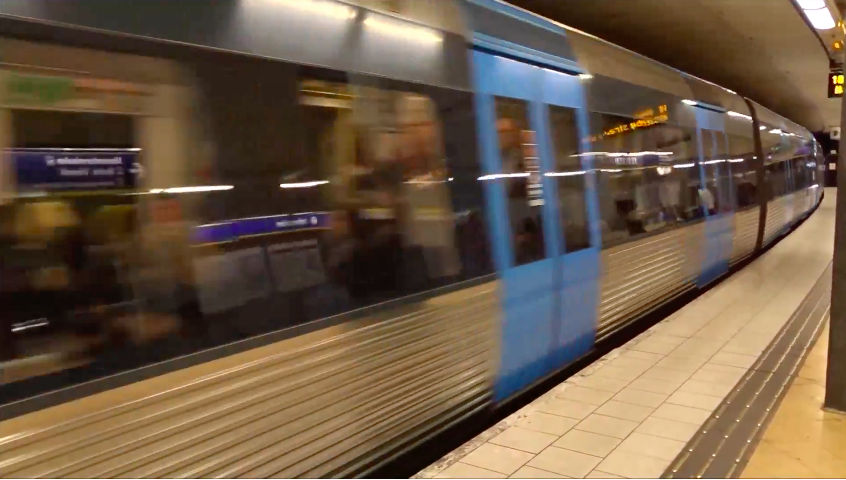 Stockholm Tunnelbana
Stockholm Tunnelbana
Lines
The Stockholm subway has three main routes, which are divided into 7 lines. The blue route contains the T10 and T11 lines, the red route includes the T13 and T14 lines and the green route comprises the T17, T18 and T19 lines. All seven lines connect all surrounding neighborhoods to downtown Stockholm where passengers can transfer to other lines, routes and other transport systems.
Blue Route
T10 Line: The trains traveling this line serve the Norrmalm district where some of the most centrally located neighborhoods are. Then, the route goes through the Tensta district on the northwest side across the suburbs of Södra Ängby, Solhem, Råcksta, Smedslätten, among others. T10 has 14 stations that are distributed through 15.1 kilometers. It has been operating since August 31, 1975.
T11 Line: This line follows the “Kungsträdgården–T-Centralen–Akalla” route that goes through the Norrmalm district and all the way to northeast Akalla. It serves multiple neighborhoods throughout the Västerort region. T11 has 12 stations that are distributed through 15.6 kilometers and has been operating since June 5, 1977.
Red Route
T13 Line: This line operates takes the “Norsborg–T-Centralen–Ropsten” route. The first one, Norsborg is a residential area to the south of Stockholm. Some of the neighborhoods here include Hallunda, Eriksberg y Slagsta. The “T-Centralen” station is located in the middle of the city, on the district of Norrmalm. Lastly, “Ropsen” is situated in the Hjorthagen district, which is located to the northwest of the metropolis. This route is 26.6 kilometers long and has 25 stations. T13 began operating on April 5, 1964.
T14 Line: Operates through the “Fruängen–T-Centralen–Centro Mörby” route within the “Fruängen” district located south of Stockholm. It travels downtown to the T-Centralen station and passes by multiple neighborhoods in Fruängen as well as the Norrmalm district before approaching the “Centro Mörby” area, which is a community belonging to the Danderyds district. T14 is 19.5 kilometers long and has 19 stations. It was inaugurated on April 5, 1964. Green Route
T17 Line: It was inaugurated on April 17, 1958 and follows the “Odenplan–T-Central–Skarpnäck” route that runs from the Odenplan District’s main plaza and through the central neighborhoods of Stockholm to the farming district of “Skarpnäcks Gård”. It covers 19.6 kilometers and has a total of 24 stations.
T18 Line: The trains on this route run through the “Alvik–T-Central– Farsta strand” route, which is the system’s oldest. The trajectory begins at the Traneberg district before passing through the downtown Stockholm, connecting it with the business and administrative area on the Norrmalm district. It then continues its route towards the Farsta Strand district, where the line ends. It began operating on October 1, 1950 becoming the first line to be inaugurated. Currently, it covers 18.6 kilometers between 23 stations.
T19 Line: T19 is the longest Stockholm Subway line, it cover 28.6 kilometers and has 35 commercial stations. It was inaugurated on September 9, 1951 and is the second line to begin operations. This route serves the “Hässelby strand–T-Centralen–Hagsätra” area, which runs from the “Hässelby-Vällingby” district, located on the northwest corner of the city, all the way to the southern district of “Hagsätra”. The route also passes through downtown Stockholm through the Norrmalm district.
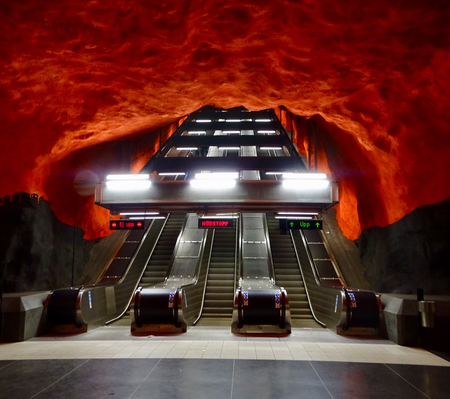
Connections
The Stockholm Subway is well connected. Most stations throughout the entire system are connected to at least one bus stop less than 100 meters away. Below are the most important of the one hundred bus stops that integrate the current transport system.
Alvik Station: Located in the district of Traneberg, this line connects the T17, T18 and T19 lines. In addition, it has access to the 22 and 12 cable car routes, as well as several bus routes.
Brommaplan Station: It is located in the district of Riksby and it connects the T17 and T19 lines of the green route. It also has access to a bus stop.
Fridhemsplan Station: Located in the Kungsholmen district, this station connects the T10 y T11 lines that belong to the blue route with the T17, T18 and T19 green route lines.
Gamla stan Station: Right in the heart of the Gamla stan district, this station connects the red route T13 y T14 lines with the green route T17, T18 and T19 lines.
Gullmarsplan Station: It is located in the Gullmarsplan neighborhood in the district of Johanneshov and connects the T17, T18 and T19 lines that belong to the green route.
Hornstull Station: Connects the T13 and T14 lines that belong to the red route and is located in the Södermalm district.
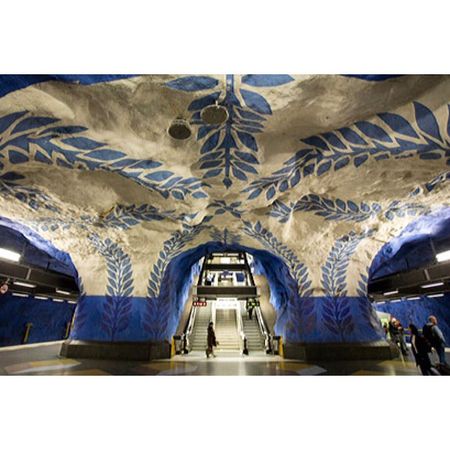
Kungsträdgården Station: This station is located right on the Kungsträdgården district and connects the blue route T10 and T11 lines.
Liljeholmen Station: Located in the Liljeholmen district, this station connects the red route T13 and T14 lines as well as the number 22 tram trail.
Mariatorget Station: This station connects the T13 and T14 lines from the red route and is located in the Södermalm district.
Medborgarplatsen Station: Located in the downtown Stockholm neighborhood of Medborgarplatsen, this station connects the green route T17, T18 and T19 lines.
Odenplan Station: In addition to connecting the green route T17, T18 and T19 lines, this station, which is located in the Vasastan district also has access to the J35, J36 y J38 railway networks.
Slussen Station: This station is located in the district of Södermalm and inter-connects the red route T13 and T14 lines with the green route T17, T18 and T19 lines.
T-Centralen Station: Located in downtown Stockholm, this station has the most connections in the entire system. It connects the green route T17, T18 and T19 lines; the red route T13 and T14 lines and the blue route T10 and T11 lines. Also, T-Cenralen connects multiple railway and tram routes.
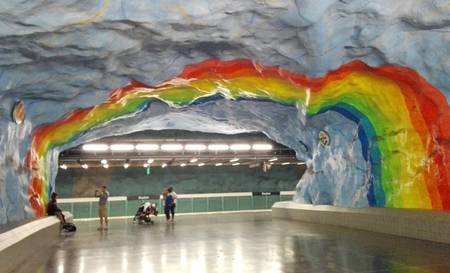 T Station Stadion
T Station Stadion
Fares
The Stockholm Subway offers several different payment methods in order to meet and satisfy its users demands. Individual or one-way tickets are available and are the best option for passengers who do not use the system on a regular basis. There are also prepaid cards that are the best choice for daily or more regular users.
Tickets are available for sale at automatic machines distributed in every station or can also be purchased from bus drivers or authorized personnel. On the other hand, the prepaid card, which is called SL Access Card, is available for purchase at ticket offices in every station and Stockholm kiosks. The card has a price of 20 Swedish Crowns (SEK) or $2.25 USD.
Individual tickets
Individual tickets allow passengers to use the Stockholm public transport system, including the subway, unlimitedly for 75 minutes. There are different kinds of individual tickets, such as:
- Mobile Ticket: They work through a smartphone app in which users can purchase an electronic ticket. This alternative has a value of 44 SEK ($4.94 USD) or a reduced rate of 30 SEK ($3.37 USD).
- Physical Ticket: Can be purchased from an automatic machine, ticket office or authorized personnel. It has a cost of 44 SEK ($4.94 USD) or a reduced rate of 30 SEK ($3.37 USD). It is important to mention that if tickets are purchased from a bus or tram driver, the cost increases to 62 SEK ($6.97 USD) or a reduced rate of 41 SEK ($4.61 USD).
SL Access Card
Prepaid SL Access Card can be used as many times as the user wants as long as it has enough credit. There are plan offers for users who prefer this alternative. It has a cost of 20 SEK ($2.25 USD) and it is available for purchase at station ticket offices as well as city kiosks and authorized personnel.
- 24 Hours: This option offers unlimited trips for the Stockholm Subway inside a 24-hour period. In addition, the passenger can also use bus lines and urban trams with it. It has a cost of 125 SEK ($14.05 USD) and or a reduced rate of 85 SEK ($9.55 USD).
- 72 Hours: This plan allows users to travel unlimitedly throughout the entire Stockholm public transport system for 72 hours for a price of 250 SEK ($28.09 USD) or a reduced rate of 165 SEK ($18.54 USD).
- 7 Days: For a price of 325 SEK ($36.52 USD) or a reduced rate of 220 SEK ($24.72 USD), passengers are able to use the entire Stockholm public transport system unlimitedly for seven days.
Note: The reduced rate applies to students under 20 years of age, handicapped people and senior citizens over 65 years of age. Also, children under 7 years of age do not need to pay for tickets as long as they are traveling with a parent or adult.
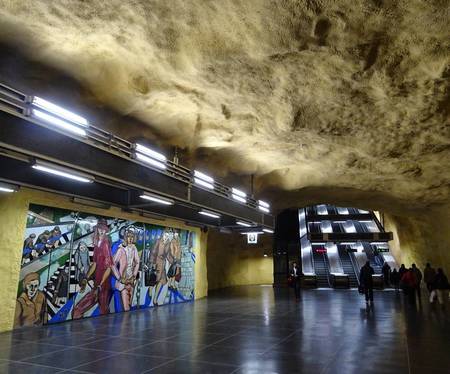
Hours of operation
The Stockholm Subway offers a convenient schedule to its users in order to serve as many passengers as possible on a daily basis. From Monday to Friday, trains begin operating at 5:00 a.m. with no interruptions until 1:00 a.m. On Saturdays and Sundays, as well as holidays, trains operate from 5:00 a.m. to 3:00 a.m. Depending on time of day and demand, trains depart every ten minutes. However, frequency increases exponentially during peak times when trains come every 4 to 5 minutes. On the other hand, frequency will decrease after 11:00 p.m. Trains will depart every 30 minutes.
Rules and regulations
Stockholm Subway authorities are committed to provide a top-notch service. It is also expected that users follow the system’s rules and regulations in order to guarantee a safe and comfortable trip to all passengers.
Below are some of the rules and regulations users must obey while using the Stockholm Subway:
- It is strictly prohibited to manipulate or use emergency equipment or alarms inside the trains and stations unless a real emergency arises.
- Passengers cannot misuse the trains or stations facilities (doors, stairs, escalators, elevators, etc.), this may affect the system’s operations.
- It is not allowed to transport large baggage or suitcases as well as any object with two or more meters in length. Dangerous equipment or objects that might affect other passengers’ safety and comfort are also prohibited inside the trains and stations.
- In case of traveling with baggage, this has to be placed on the ground, under the seat or on the passenger’s lap throughout the trip. Baggage also cannot obstruct other passengers or Stockholm Subway personnel.
- While on the escalators, passengers may not use: strollers, bicycles, wheelchairs, shopping carts or heavy baggage. This kind of objects can only be transported on elevators o special ramps in order to ensure safety.
- Users can travel with pets as long as they are on leashes or being transported in a cage.
- Unless they are in cages, users can’t travel with more than two pets.
- Unless the passenger has been authorized by Stockholm Subway authorized personnel, users cannot solicit or to give handouts.
- Smoking, eating or drinking alcohol inside trains or stations is strictly prohibited.
- Users cannot lay on seats or the ground inside trains or stations.
- It is strictly prohibited to attack or attempt to attack other passengers inside stations or trains. Such behavior will be penalized with fines and the user will be subject to local authorities.
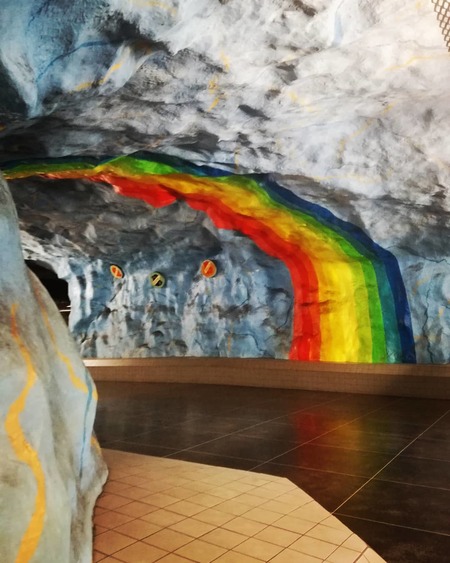
Connection to the airport
While the Stockholm Subway does not have stations that provide direct access to the Stockholm-Arlanda Airport, it does connect with a high-speed train system that will take passengers closer, 20 minutes away approximately. To connect with the high-speed trains, users must take either of the seven subway lines to the T-Centralen station where several different kinds of transportation connect, including trams, buses, trains and more. Once arrived at the station, the passenger must head to the Stockholm Central Station, also known as “Stockholm C”. The high-speed Arlanda Express trains depart from there.
This trip takes about 20 minutes and tickets have a cost of 280 SEK ($31.51 USD). They are available at automatic machines as well as ticket offices.
To go the other direction, from the Stockholm-Arlanda Airport to downtown Stockholm, passengers will need to go underground at the terminal where the Arlanda Express station is. Trains depart every fifteen minutes. Additionally, outside the terminal are different bus stops that travel to different parts of the city. However, there is also the taxi option as well as different car rental agencies.
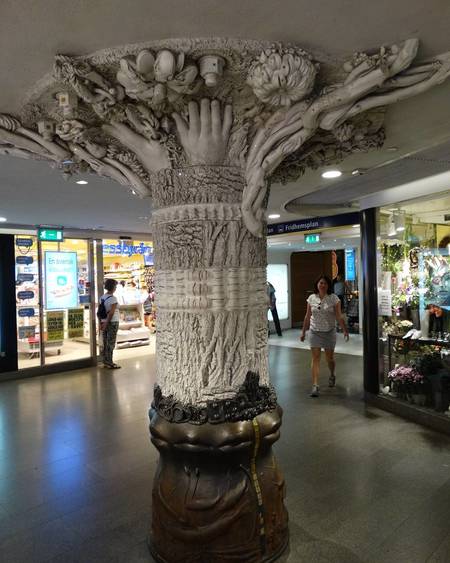
Future extensions
Currently, the most significant and important plans the Stockholm Subway authorities are working on are developing the creation of the yellow route. Construction is set to begin in the summer of 2018 and it is expected to be finalized by the fall of 2024. It will cover 4.6 kilometers at first but will continue to expand with time.
This new line plans to connect the district of Hagastaden with the entire underground system in the city. Conversations and plans about its construction began in 2012 when authorities of the municipalities of Stockholm and Solna contemplated the need to provide an efficient transportation service to this district. However, it was not until 2017 when negotiations concluded on good terms and approximate dates to begin and finalize the construction were established. This line will travel through the “Odenplan–Hagastaden–Arenastaden” route, which goes from the green route “Odenplan” station to the Hagastaden district and will cross several surrounding neighborhoods. The decision to select the color yellow to represent this line was a product of the considerations between project authorities and region neighbors.
 Stockholm, Sweeden
Stockholm, Sweeden
Tourist attractions
Stockholm has a lot to offer for its tourists. It is a city rich in museums, restaurants, parks and entertainment. For example, outside the Gamla stan station, which connects lines 13, 14, 17, 18 and 19, is the beautiful “Old Town”, a place where visitors enjoy getting lost in while they walk and enjoy its cobblestone streets and old houses, alleys, plazas, modern stores, bars and restaurants. It is the perfect spot to begin to explore the Swedish capital city of Stockholm. Also, not far away from the “T-Centralen” station is the City Council, an incredible redbrick and golden-highlight, building that dates back to the early 1900’s. Its architecture and mix of styles seems like a Venetian construction but with a Byzantine decoration. This building represents the diversity this city has to offer. Contemplating its architecture will become a hobby.
Metro map of Stockholm
Map via images.ctfassets.netSee map full resolution. It may take a little bit to load.
Download map.
Stockholm Tunnelbana map
- Also Known As: Tunnelbana
- Passengers/Day 1070000
- Fares: 3.73
- 24h operation: Fri, Sat night
- Air Conditioning: No
- Walk between platforms: No
- Driverless trains: No
- Screen Doors Platforms: No
- Operator: MTR Corporation
- Â 25 SEK
- Stockholm Metro Official Website
Help us
If you consider that the information we provide is wrong, not accurated, outdated, translation contains errors, and you would like to help us to improve the file...you can contact us here.
Feel free to contact us if you dont find the system you're looking for and we'll add it as soon as we can!
Thank you very much!









